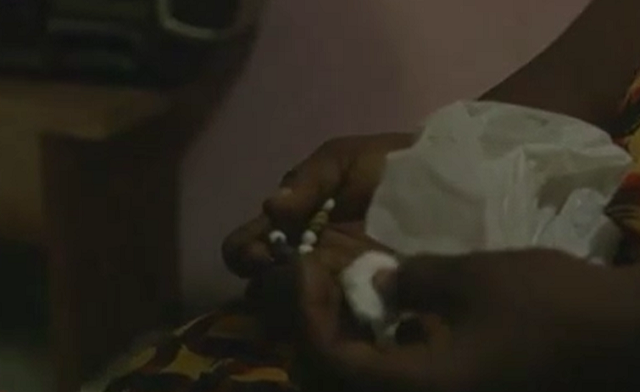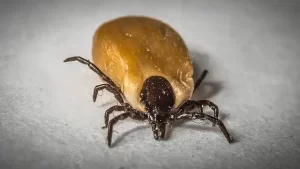The world’s first “cured” female AIDS patient appears
- Engineered Soybeans with Pig Protein: A Promising Alternative or Pandora’s Dish?
- Severe Fever with Thrombocytopenia Syndrome (SFTS): A Tick-Borne Threat with High Mortality
- Why Isolating Bananas Extends Their Shelf Life?
- This common vitamin benefits the brain and prevents cognitive decline
- New report reveals Nestlé adding sugar to infant formula sold in poor countries
- Did Cloud Seeding Unleash a Deluge in Dubai?
The world’s first “cured” female AIDS patient appears
- Red Yeast Rice Scare Grips Japan: Over 114 Hospitalized and 5 Deaths
- Long COVID Brain Fog: Blood-Brain Barrier Damage and Persistent Inflammation
- FDA has mandated a top-level black box warning for all marketed CAR-T therapies
- Can people with high blood pressure eat peanuts?
- What is the difference between dopamine and dobutamine?
- How long can the patient live after heart stent surgery?
The world’s first “cured” female AIDS patient appears, what is the “secret treatment” behind it?
Recently, American researchers announced that a female leukemia and AIDS patient was cured after receiving a special stem cell transplant, becoming the first woman to be cured of AIDS after receiving related therapy.
Reports said stem cell transplantation can only be applied to AIDS patients who also suffer from serious diseases such as cancer. Stem cell transplants are too risky and too toxic for HIV-only patients to be treated in a broader context.”
Recently, scientists from Cornell University’s Weill Cornell Medicine announced a study of a female patient with both AIDS and leukemia after a stem cell transplant using umbilical cord blood.
It’s getting better, and now there is no AIDS virus ( HIV ) in the body.

This patient is believed to be the world’s first “cured” female AIDS patient and mixed-race AIDS patient, and may also be the third “cured” AIDS patient. The first two “cured” patients are male.
Unlike the previous two “cured” cases, this time a cord blood stem cell transplant was used. What does its success mean? Could stem cell transplantation be an important weapon in the treatment of HIV patients ? How big is the risk?
The reporter talked with the research team of Weill Cornell Medical College who participated in the treatment of the third patient and Adeeba Kamarulzaman, president of the International AIDS Association, for interpretation.
First umbilical cord blood transplant ‘cures’ HIV case
The patient was a middle-aged woman of mixed race who was diagnosed with AIDS in 2013 and was diagnosed with acute myeloid four years later, according to a presentation by researchers at a conference on retroviruses and opportunistic infections in Denver, Colorado Leukemia (a blood cancer in which myeloid white blood cells proliferate abnormally).
After being diagnosed with leukemia, she underwent a treatment called haploidentical cord blood stem cell transplantation in 2017 .
Around 2020 , the patient discontinued antiretroviral therapy. After 14 months, she had no detectable active HIV in her blood , meaning HIV was no longer active in her body or had disappeared.
This AIDS “cured” case is the first successful “cured” case after receiving umbilical cord blood stem cell transplantation.
In the two previous known HIV cures, the patients received adult cell transplants derived from bone marrow hematopoietic stem cells.
Adeeba Kamarulzaman , president of the International AIDS Association, analyzed to the reporter that the disadvantage of bone marrow transplantation is that, firstly, it requires a high degree of matching of donor-related antigens, and secondly, patients must undergo chemotherapy to reduce the risk of the body rejecting the transplant. , and chemotherapy may lead to severe immunosuppression and more potential complications in patients.
The treatment of AIDS patients in the United States uses a combination of different sources of stem cell transplantation to deal with the risks arising from the treatment.
The patient first received high-intensity chemotherapy to kill diseased immune cells in the body, and then received a haploidentical cord blood stem cell transplant.
The source of the transplanted stem cells was hematopoietic stem cells from a close relative of a healthy patient and umbilical cord blood stem cells obtained from an infant who was not related to the patient and whose relevant antigens were only partially matched.
JingMei Hsu , an associate professor of medicine at Weill Cornell Medical College who was primarily involved in curing the patient, told that the combination of the cord blood and the blood cells of the patient’s relatives may have shielded her from strong side effects.
The Weill Cornell Medical College research team further explained to media, “Stem cells from close relatives of patients are used to quickly restore the patient’s blood cell population to reduce infection complications, while umbilical cords from unrelated newborns Blood, with the CCR5Δ32 anti – HIV gene mutation, can help patients build up immunity to HIV.”
The research team said that they found that even if the relevant antigens of the umbilical cord blood were only partially matched, the patients could be successfully cured, which shows that the umbilical cord blood can provide suitable hematopoietic stem cells for transplantation to patients who cannot find a matching adult donor.
Because HIV -resistant gene mutations are more common in people of European ancestry, finding a well-matched donor with the mutation for traditional stem cell transplants in non-white patients can be difficult.
The umbilical cord blood used in this treatment is relatively weak in immunogenicity, and the requirements for matching are not so strict.

Stem cell transplantation therapy is difficult to promote
The “cured” cases reported this time come from a National Institute of Allergy and Infectious Diseases ( NIH )-funded study of 25 HIV -infected people who also suffered from serious illnesses such as cancer.
The patients received haploidentical cord blood stem cell transplants to treat serious diseases such as cancer.
At this stage, they prefer to describe the woman in “remission” of AIDS rather than “cured,” the team said.
So can stem cell transplant therapy be extended to the majority of AIDS patients?
Xu Jingmei told the media that stem cell transplantation can only be applied to AIDS patients who also suffer from serious diseases such as cancer. ” Stem cell transplants are too risky and too toxic for HIV -only patients to be treated in a broader context.”
Adeeba Kamarulzaman holds a similar view. She explained to every reporter that in terms of treatment itself, the difficulty is that such a treatment requires a professional team to provide treatment, and the cost is also very high.
In terms of patient safety, patients must receive chemotherapy before transplantation, which can cause them to suffer from side effects such as immunosuppression or diarrhea, hair loss, and the risk of infection. At the same time, patients also need to face rejection.
Marshall Glesby , a professor of medicine at Weill Cornell Medical College, stressed that for people who do not need a transplant, stem cell transplant therapy can bring many health problems and even a 20% chance of death.
Anthony Fauci, director of the National Institute of Allergy and Infectious Diseases, said in an interview that the woman who had improved just happened to have a disease that required a stem cell transplant, so “you don’t want people to think (the therapy) can now be done. Applied to (about 36 million AIDS patients worldwide)”.
Nevertheless, Adeeba Kamarulzaman believes that the current AIDS “cure” results still have important reference value for scientific research.
“The knowledge gained from the three cured patients will enrich the body of knowledge about HIV treatment, allow scientists involved in treatment research to understand what factors are important to the success of treatment, and ultimately help them design more easily produced and scaled applications. related drugs.”
The world’s first “cured” female AIDS patient appears
(source:internet, reference only)
Disclaimer of medicaltrend.org
Important Note: The information provided is for informational purposes only and should not be considered as medical advice.



